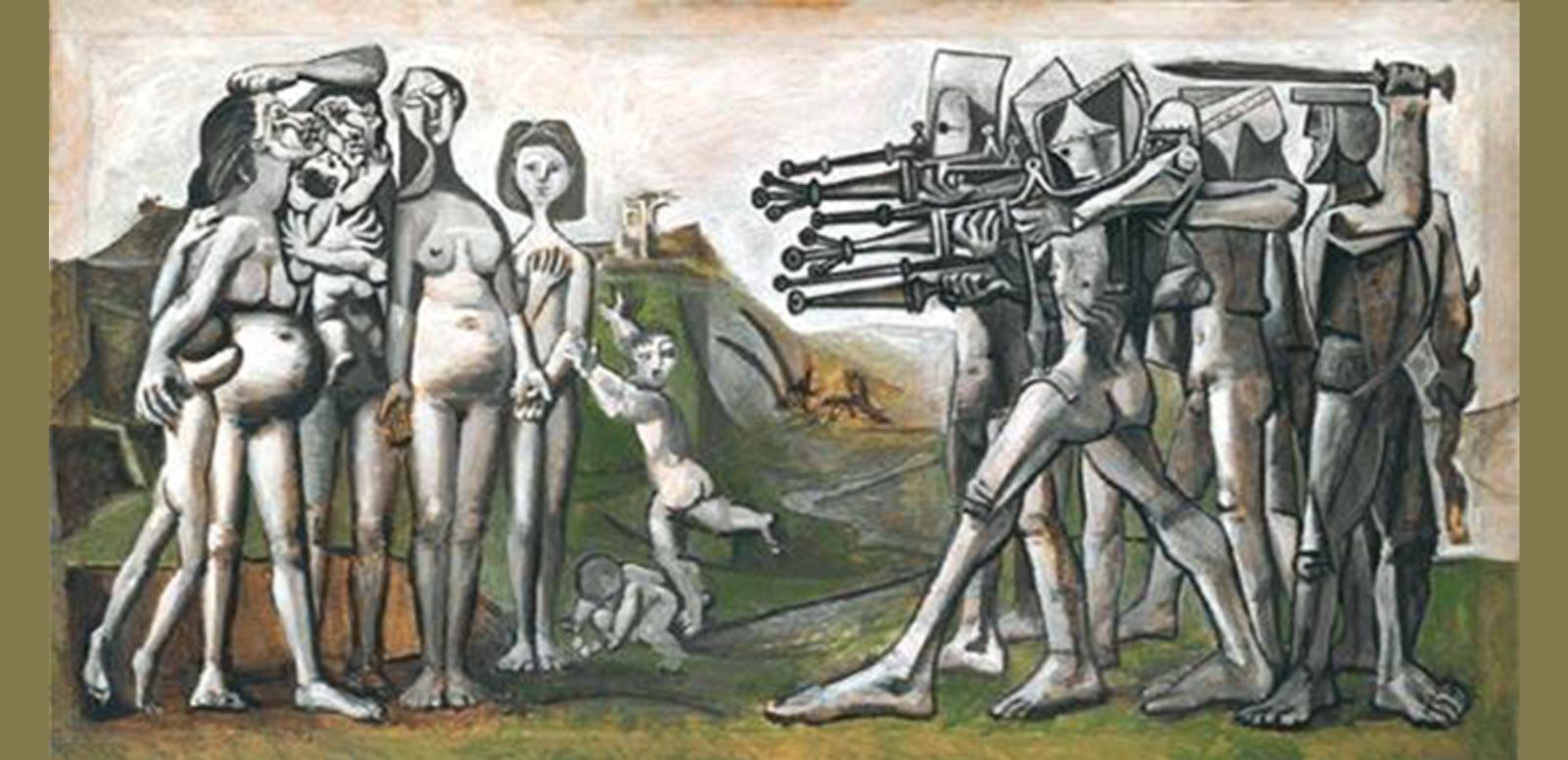
Musée national Picasso-Paris
© Sucesión Picasso, VEGAP, Madrid, 2023
On January 18, 1951 in Vallauris (France), Picasso created the work Massacre in Korea. Through this painting, the artist expressed his solidarity with the North Korean civilian victims who were suffering the consequences of the violence committed by the U.S. military during the Korean War (June 25, 1950 - July 27, 1953).
Aside from the title, Picasso does not depict specific events of the Korean War in his work. Instead, he chooses to portray the characters in a more general way. The only elements that evoke something real are the river and the ruins. The former divides the painting in two and recalls the partition of Korean territory, which is still in force. The ruins, on the other hand, allude to the Hiroshima deflagration.
The painting, in an expressionist style, depicts a bleak landscape, where the rubble of the destroyed buildings serves as a background. In the foreground, six soldiers are seen preparing to execute a group of women and children. While the soldiers appear as cold metal automatons, devoid of empathy, the victims, completely naked, wait with resignation for the inevitable outcome.
En este sombrío escenario, un niño demasiado pequeño para comprender la amenaza juega despreocupadamente en el suelo, ajeno al peligro que lo rodea. Una de las mujeres, ubicada en el extremo derecho, muestra una paralizante incredulidad ante la situación. Otra mujer cierra los ojos en una resignada aceptación del destino que se avecina. Dos mujeres más, una embarazada con un hijo mayor que llora aferrado a ella y otra con su recién nacido contra su pecho, reflejan un profundo terror en sus rostros.
The depiction of the Western power as a dehumanized and destructive monster led the United States to consider this work as communist propaganda during the Cold War years. The French Communist Party, for its part, saw it as ambiguous as to the identity of the real culprits of the conflict, since, according to them, its depiction departed significantly from socialist realism. The work was also met with disapproval from certain critical sectors internationally, especially those affiliated with U.S. museums such as the Museum of Modern Art (MOMA) in New York.
Nevertheless, true art transcends temporal and geographical limitations, prevailing over ephemeral circumstances. In this way, Massacre in Korea has endured as a seminal work by Picasso in defense of peace and human rights.
As part of the Picasso Celebration 1973-2023, an initiative promoted by the Governments of Spain and France to pay tribute to Pablo Picasso on the 50th anniversary of his death, the Museo Picasso Málaga is showing this painting from October 3, 2023 to March 31, 2024 in the exhibition El eco de Picasso.
Fuentes:
Museu Picasso Barcelona:
AN-A Fundación:
https://an-a.foundation/el-cuadro-desconocido-de-picasso-masacre-en-corea/

